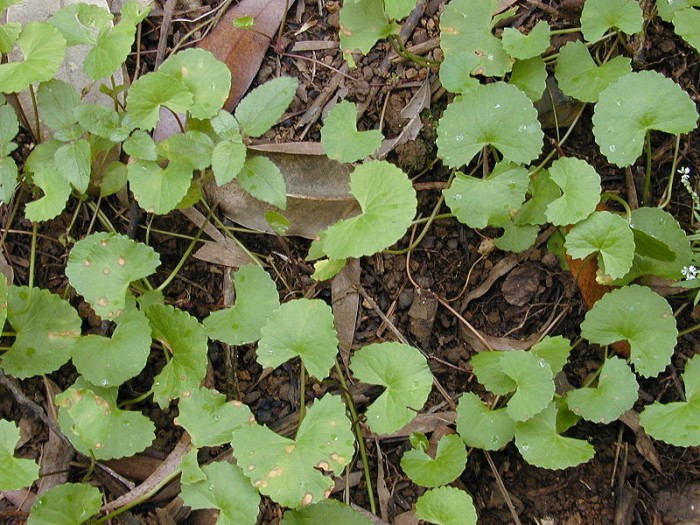Yoga for most of us is about rejuvenation and bringing about equilibrium to the self.
Yet life works in cycles of ebb and flow. And with this fluctuation there are inevitably periods of stress, improper diet, overwork, lack of sleep, and accumulation of free radicals in the body.
The key is this—whenever you experience such periods in the life cycle it is a hint from the body for nutritional support.
A primary step in replenishing the system and restoring the “prana” is through herbs and one of the main herbs in Ancient Ayurvedic medicine is Gotu Kola. Gotu Kola is also known as “Brahmi,” which is derived from Hinduism meaning the “Brahman.”
For the unfamiliar, “The Brahman” is the unchanging reality amidst and beyond the world. In Sanskrit, it is Sat-cit-ananda, which is being-consciousness-bliss and is the highest of realities. Throughout its history, Brahmi has been one of the more important herbs when it comes to herbal medicine.
In India, the herb was used with newborn children, with the wide held belief being that the herb would cause the child to become more open minded and intelligent; essentially Brahmi was actually believed to free the mind of the child. Additionally, the herb was well known and used by the great sages of Indian philosophy, who appropriately gave it its name, which means “knowledge.”
Charaka, Ayurveda’s third legendary physician, who identifies the seasons and times of day when a particular plant’s medicinal powers achieve their maximum potency, states that the true value of brahmi lies in its outstanding performance against senile decay and loss of memory, and its capacity for enhancing verbal articulation.
One interesting piece of evidence for its effectiveness is given by Appa Rao in Medicinal Plants of India:
“A double blind clinical test was conducted on thirty mentally retarded children, who were free from epilepsy and other neurological conditions, to study the effect of the drug extracted from Brahmi on general mental ability. The results indicated a significant improvement in both general ability and behavioral patterns when the drug was administered for a short period of twelve weeks.”
Brahmi and the Yogi/Yogini
Brahmi is an important supplement for yogis and improves meditation. A dosage of brahmi taken before meditation is a great aid in this practice. It helps to awaken the crown chakra at the top of the head (sahasrara), and balance the right and left hemispheres of the brain. Brahmi is one of the best herbs for balancing and rejuvenating the whole mind and consciousness system.
Beyond just being a great adaptogenic herb for the mind, Brahmi also enhances the immune system, increases hair and nail growth, strengthens the adrenals, aids in digestion, increases fertility, accelerates the healing of wounds, helps to cleanse the skin and the blood, and balances all three doshas (vata, pitta, kapha).
About the Plant
Brahmi, a plant from the Umbelliferae family, is the Sanskrit name for the Indian pennywort, also known as khulakudi in Hindi. In the dictionary of herbs it is known as somavati or saraswati.
It is a so-called “weed” which is found growing wild in marshlands and reservoirs, and near the banks of rivers and lakes all over India and South Africa. This herb creeps along the ground, rooting at the nodes, and has small light green leaves fluted around the edges. In taste it resembles parsley, but unlike parsley it is slightly bitter. The entire plant, especially the leaves, is used for medicinal purposes.
It is perhaps the most important nervine herb used in Ayurvedic medicine.
Love elephant and want to go steady?
Sign up for our (curated) daily and weekly newsletters!
Assistant Editor: Kathryn Muyskens / Editor: Catherine Monkman
Photo: Wikimedia Commons











Read 0 comments and reply